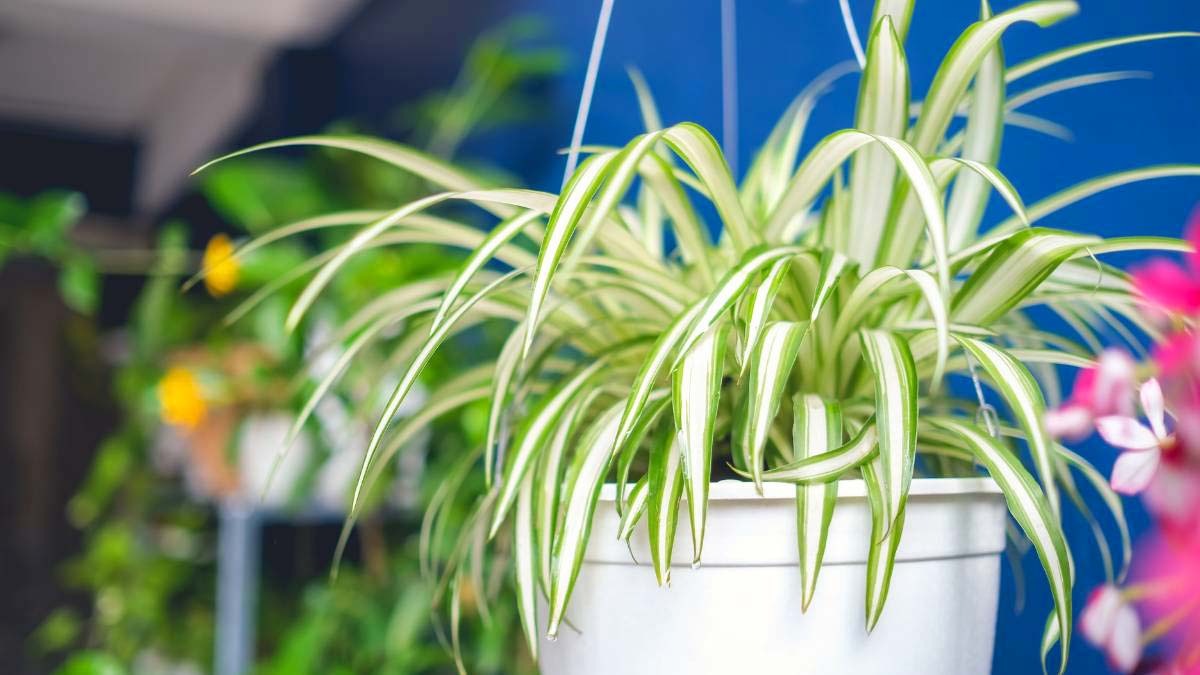Types of Spider Plants, also known as Chlorophytum comosum, have a few different types including variegated spider plants, all green spider plants, and curly spider plants. These plants have long, arching leaves that are green or green with white stripes and produce small, white flowers.
They are known for their air-purifying abilities and are easy to care for, making them a popular choice for indoor gardening enthusiasts.
Benefits Of Spider Plants
Spider plants come in various types, each offering unique benefits. From enhancing air quality to adding a touch of natural elegance, these plants require minimal care and are perfect for any indoor space.
Air Purification
Spider plants, scientifically known as Chlorophytum comosum, are renowned for their exceptional air-purifying properties. These plants have the unique ability to filter out harmful toxins and pollutants present in the air. By absorbing carbon dioxide and releasing oxygen, spider plants contribute to maintaining a fresh and healthy indoor environment. In addition, spider plants are particularly effective in combating common indoor air pollutants such as formaldehyde, benzene, and xylene, which may be emitted by household objects and cleaning products.
Indoor Decor
Spider plants not only promote cleaner air but also enhance the aesthetic value of indoor spaces. With their elegant green foliage and cascading leaves, these plants serve as beautiful decorative elements that effortlessly add a touch of natural beauty to any room. Whether placed in hanging baskets, on shelves, or as tabletop plants, spider plants bring life and vibrancy to interior spaces, creating a soothing and refreshing ambiance. Their versatility in adapting to various environments makes them a popular choice for both modern and traditional interior designs.
Low Maintenance
One of the key advantages of spider plants is their low maintenance requirements, making them ideal for busy individuals or those lacking a green thumb. These resilient plants can tolerate a wide range of light conditions, from bright indirect light to low light, making them suitable for different areas of the home or office. Spider plants can flourish in a variety of climates and are known to be forgiving when it comes to irregular watering. Their ability to thrive in less than ideal conditions, coupled with their resistance to common pests and diseases, makes spider plants an excellent choice for those seeking hassle-free greenery.
Popular Spider Plant Varieties
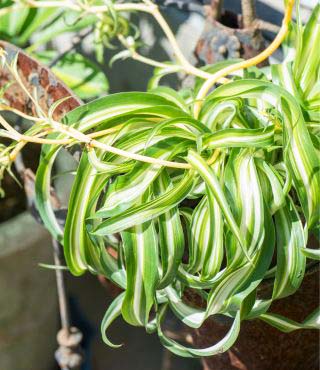
Spider plants, also known as Chlorophytum comosum, are popular houseplants due to their vibrant green leaves and easy care requirements. This versatile plant has several varieties, each with its own unique characteristics and visual appeal. Below, we have highlighted some of the most popular spider plant varieties:
Variegated Spider Plant
The Variegated Spider Plant is a favorite among plant enthusiasts for its stunning foliage. This variety has leaves that are predominantly green with creamy white stripes running along the edges, creating an eye-catching contrast. The variegated pattern adds a touch of elegance to any indoor space, making it a perfect choice for those seeking a stylish plant to brighten up their home.
Bonnie Spider Plant
The Bonnie Spider Plant is celebrated for its compact size and robust growth habit. With its dense clusters of arching leaves, this variety forms attractive cascading displays, making it an excellent choice for hanging baskets or elevated planters. The Bonnie Spider Plant is also known for its ability to produce an abundance of offshoots or “babies,” which can be easily propagated and shared with friends or used to expand your collection.
Hawaiian Spider Plant
The Hawaiian Spider Plant, as the name suggests, originated from Hawaii and boasts long, gracefully arching leaves. This variety is prized for its vivid green foliage and striking white stripes that run vertically down the length of each leaf. The Hawaiian Spider Plant is a popular choice for plant lovers looking to create a tropical and vibrant atmosphere within their homes or office spaces.
Reverse Variegated Spider Plant
The Reverse Variegated Spider Plant is a unique variety with a captivating twist. Unlike the traditional variegated spider plant, this variety showcases leaves that are predominantly white with thin, dark green stripes. The reverse variegation creates a mesmerizing effect, bringing a touch of intrigue and elegance to any plant collection or decorative display.
Solid Green Spider Plant
The Solid Green Spider Plant is a classic variety loved for its simplicity and lush green foliage. With its solid, vibrant green leaves and upright growth habit, this spider plant variety adds a refreshing natural touch to any interior. It is an easy-to-maintain choice for those who prefer a more understated and minimalist look.
Growing Spider Plants
Growing spider plants (Chlorophytum comosum) is a popular choice among indoor plant enthusiasts for its beauty and low maintenance. Whether you are a beginner or an experienced gardener, spider plants are a great addition to your home or office space. In this article, we will delve into the essential guidelines for successfully cultivating spider plants, including watering, light requirements, soil and potting, and propagation techniques.
Watering
Spider plants thrive in moist but not soggy soil, making proper watering crucial for their well-being. It is important to strike a balance between overwatering and underwatering. Overwatering can lead to root rot, while underwatering may cause the plant’s leaves to brown and wilt. Here are some watering tips to keep in mind:
- Water your spider plant deeply, allowing the top inch of soil to dry out before the next watering.
- Ensure good drainage by using a well-draining potting mix and a container with drainage holes.
- Check the moisture level in the soil regularly by inserting your finger about an inch deep into the soil. If it feels dry, it’s time to water.
- Avoid water sitting in the plant’s saucer, as this can lead to overwatering. Empty any excess water immediately.
Light Requirements
Spider plants prefer bright, indirect light but can tolerate lower light conditions. Providing them with the right amount of light is essential for healthy growth and vibrant foliage. Here are some tips for optimizing the light conditions for your spider plant:
- Place your spider plant near a north or east-facing window where it can receive bright, filtered light.
- Avoid placing the plant in direct sunlight, as this can scorch the leaves.
- If your spider plant is not receiving enough light, you may notice pale, elongated leaves. In this case, consider providing supplemental artificial light with a grow light.
Soil And Potting
Choosing the right soil and potting conditions is crucial for the health and growth of spider plants. These plants thrive in well-draining soil that retains moisture without becoming waterlogged. Here are some guidelines for selecting soil and potting:
- Use a well-draining potting mix that allows excess water to easily escape, preventing root rot.
- Avoid using heavy, compacted soils, as they can retain too much moisture and suffocate the plant’s roots.
- Choosing a container with drainage holes ensures proper drainage and prevents water from accumulating at the bottom.
- Repot your spider plant every 1-2 years to provide fresh soil and promote healthy growth.
Propagation Techniques
Spider plants are easy to propagate, making them a fantastic choice for beginner gardeners. There are several methods you can use to propagate spider plants, including:
- Plantlet division: Spider plants produce plantlets or offshoots that can be separated and replanted in their own pots.
- Stem cuttings: Select a healthy stem with a few leaves and root it in water or directly in potting soil.
- Layering: Encourage the plant to produce roots by bending a stem down and covering a section with soil until it establishes roots.
By following these propagation techniques, you can expand your collection of spider plants and share them with friends and family.
Common Spider Plant Problems
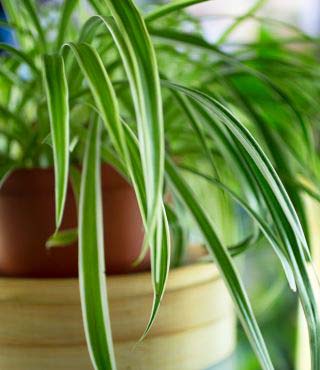
Spider plants are susceptible to a few common issues, such as brown tips, yellowing leaves, and root rot. To address these problems, it’s important to properly water and provide them with adequate light and nutrients. Regularly inspect and prune the plants to keep them healthy and vibrant.
Spider plants, also known as Chlorophytum comosum, are popular houseplants known for their long, arching leaves and ability to thrive in various conditions. While spider plants are generally resilient and low-maintenance, they can experience some common problems. Understanding and addressing these issues promptly can help ensure the continued health and beauty of your spider plants. In this section, we will discuss some of the most common problems that spider plants may face and how to deal with them effectively.
Brown Tips
One of the most frequently encountered problems with spider plants is the development of brown tips on the leaves. Brown tips can be caused by several factors, including:
- Watering issues: Overwatering or underwatering can both contribute to the appearance of brown tips on spider plant leaves. Ensure that you are providing the right amount of water, allowing the soil to dry out between waterings.
- Low humidity: Spider plants prefer moderate humidity levels, and low humidity can lead to dry and brown tips. Consider misting the leaves or placing a humidifier near the plant to increase humidity.
- Chemical exposure: Exposure to chemicals such as fluoride or chlorine in tap water can also cause brown tips. Using filtered or distilled water can help prevent this issue.
To prevent and treat brown tips on spider plants, it is essential to maintain a consistent watering schedule, provide adequate humidity, and avoid using water that contains chemicals harmful to the plants.
Root Rot
Root rot is another common problem that spider plants may experience, particularly if they are overwatered or have poor drainage. Root rot occurs when the roots are consistently exposed to excess moisture, leading to decay and fungal growth. Signs of root rot include wilting, yellowing leaves, and a foul smell coming from the soil. To prevent root rot in spider plants:
- Avoid overwatering: Spider plants prefer slightly moist soil but can be susceptible to root rot if the soil is constantly wet. Allow the top inch of soil to dry out between waterings.
- Ensure proper drainage: Use a well-draining potting mix and make sure the pot has drainage holes to allow excess water to escape.
- Repot if necessary: If you suspect root rot, carefully remove the plant from its pot and examine the roots. Trim any mushy or rotten roots and repot the plant in fresh, well-draining soil.
Taking these preventative measures can help keep your spider plants healthy and free from root rot.
Pests And Diseases
Spider plants are generally resilient to pests and diseases, but they can still encounter some common issues. The most common pests that may affect spider plants include:
- Spider mites: These tiny pests can cause yellowing and stippling on the leaves and may leave fine webbing behind.
- Aphids: Aphids can cluster on the undersides of leaves and cause distortion or curling.
- Mealybugs: Mealybugs are small, white insects that leave a cotton-like substance on the leaves and stems.
To prevent and control pests on spider plants, try the following:
- Inspect regularly: Regularly check the plant for any signs of pests or diseases. Early detection is essential for effective control.
- Remove pests manually: If you spot any pests, gently wipe them off with a damp cloth or cotton swab. For larger infestations, you may need to use an insecticidal soap or natural insecticide specifically formulated for houseplants.
- Isolate infected plants: If you have multiple spider plants, it’s crucial to isolate any infected plants to prevent the pests from spreading.
Taking these steps can help protect your spider plants from common pests and diseases, ensuring they stay healthy and vibrant.
Yellowing Leaves
Yellowing leaves are a common issue that can occur in spider plants. Several factors can contribute to yellowing leaves, including:
- Nutrient deficiencies: Spider plants may display yellowing leaves if they are not receiving adequate nutrients. Consider using a balanced fertilizer formulated for houseplants to provide the necessary nutrients.
- Improper light: Spider plants prefer bright, indirect light. Insufficient light can cause yellowing leaves, while direct sunlight can scorch the leaves.
- Overwatering: Excess water can lead to root rot and yellowing leaves. Ensure that you are not overwatering your spider plants.
To address yellowing leaves in spider plants, it is important to give them the right amount of light, adjust watering practices, and provide appropriate nutrition through regular fertilization. By being aware of the common problems that spider plants may face and taking proactive measures to prevent and address them, you can enjoy healthy and thriving spider plants in your home.
Spider Plant Care Tips
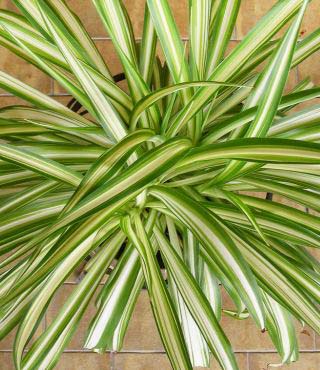
If you are a fan of indoor plants, then the spider plant is likely on your list. Not only are they visually appealing with their long, arching leaves and spider-like babies, but they are also low maintenance and easy to care for. To keep your spider plant healthy and thriving, there are a few important care tips to keep in mind.
Pruning And Grooming
To ensure your spider plant maintains its beauty and shape, regular pruning and grooming are essential. Remove any brown or yellow leaves by snipping them off at the base of the plant. This will not only keep your spider plant looking tidy but will also prevent any potential diseases from spreading. Additionally, grooming involves removing any spiderettes that have grown to a decent size. These little spider plant babies can be repotted or given to friends, making them a delightful gift!
Fertilization
Spider plants thrive when given the right nutrients. To keep them healthy and vibrant, it is recommended to fertilize your spider plant once a month during the spring and summer seasons. A balanced, water-soluble fertilizer with equal NPK (nitrogen, phosphorus, and potassium) ratio is ideal. Dilute the fertilizer as per the manufacturer’s instructions and apply it to the soil in small amounts. Over-fertilizing can lead to burnt roots, so always follow the recommended dosage.
Repotting
Spider plants are known to be rapid growers, and therefore, repotting becomes necessary when they outgrow their current pots. Look for signs such as roots protruding from the drainage holes or the plant becoming top-heavy. When repotting, choose a pot that is one size larger and has proper drainage. Remove the spider plant gently from its current pot, loosen the roots, and place it in the new pot with fresh potting soil. Water thoroughly and keep it in a bright location to aid in the transition.
Dealing With Pests And Diseases
While spider plants are generally resilient, they can still fall victim to pests and diseases. Common pests include spider mites, aphids, and mealybugs. Regularly inspect the leaves for any signs of infestation, such as webbing, white specks, or sticky residue. If you notice any pests, quickly isolate the affected plant and treat it with an appropriate natural or chemical insecticide. As for diseases, root rot can occur if the plant is overwatered, so ensure the soil is well-drained.
By following these spider plant care tips, you can enjoy the beauty of these green wonders without much fuss. Remember to prune, fertilize, repot when needed, and keep an eye out for pests and diseases to ensure your spider plant thrives and adds life to your indoor space.
Creative Uses Of Spider Plants
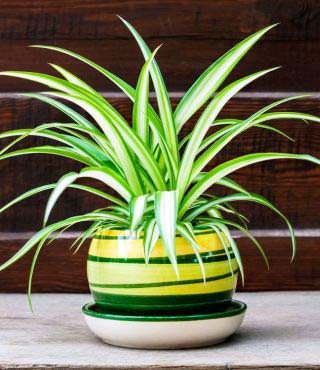
Spider plants are not only known for their beautiful foliage and air purifying qualities, but they also have a wide range of creative uses. From adding a touch of green to hanging baskets to creating stunning vertical gardens, spider plants can be versatile and visually appealing. They are also perfect for smaller spaces like terrariums, bringing life and beauty to these enclosed environments.
Hanging Baskets
Spider plants are excellent choices for hanging baskets due to their cascading foliage. By placing a spider plant in a hanging basket, you can easily add a pop of green to any space. Hanging baskets with spider plants are commonly hung on front porches, balconies, or even indoor areas with sufficient natural light.
Vertical Gardens
Create a stunning vertical garden with spider plants to make the most of limited space. Spider plants can be grown vertically using specialized vertical garden systems or by attaching them to a vertical structure like a trellis or wall. These lush green plants can transform a plain wall into a vibrant living artwork.
Terrariums
Spider plants make an excellent choice for terrariums due to their compact size and ability to thrive in enclosed environments. These miniature gardens enclosed in glass containers can add a touch of nature and beauty to any room. Spider plants in terrariums can create a lush and serene ambiance, making them perfect for offices or homes where space is limited.
Frequently Asked Questions On Types Of Spider Plants
How Many Spider Plant Varieties Are There?
There are multiple spider plant varieties available, with different leaf colors and patterns.
Do All Spider Plants Have Stripes?
Some spider plants have stripes, but not all of them do. It depends on the specific variety of spider plant you have.
Does Spider Plant Have Another Name?
Spider plant is also known by the name Chlorophytum comosum.
What Is The Lifespan Of A Spider Plant?
The lifespan of a spider plant typically ranges from 2 to 5 years. It can live longer under ideal conditions, such as proper care, adequate sunlight, and regular watering. However, factors like pest infestation, diseases, or neglect can shorten its lifespan.
What Are The Different Types Of Spider Plants?
Spider plants come in various varieties, including the classic green spider plant, variegated spider plant, and curly spider plant.
Conclusion
To sum up, spider plants are a popular choice for both novice and experienced gardeners due to their low maintenance and unique appearance. From the classic Chlorophytum comosum to the variegated varieties like the Bonnie and Hawaiian spider plants, each type offers its own charm and beauty.
Whether you’re looking to add greenery to your indoor space or enhance your outdoor garden, spider plants are a versatile option that can thrive in various conditions. Explore the different types, find the one that resonates with your style, and enjoy the benefits they bring to your surroundings.
